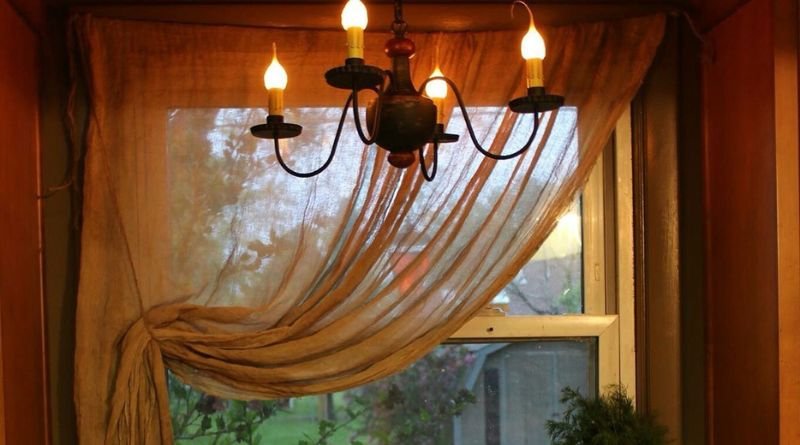Cheesecloth curtains have been around in some form or another since the mid-18th century, and they’re having a style resurgence today. They offer an airy, billowy look that works especially well in vintage-style spaces, but they’re such an easy hack that even modern homes can benefit from their simple elegance. Here’s how to make them yourself! You will need…
How the heck do I get this fabric?
If you’re looking for a fabric with a bit of homespun charm, look no further than cheesecloth. This simple fabric can be used to make curtains, tablecloths, and more. Best of all, it’s easy to find and relatively inexpensive. Here’s what you need to know about using cheesecloth in your home decor. It has the texture of lightweight gauze but is much sturdier and easier to work with. Cheesecloth comes in many colors, so choose one that complements your décor or pick up some white cotton sheets from the local dollar store and dye them yourself! The best part is that it’s available at most stores that sell kitchen supplies.
How many yards will I need?
If you’re planning on making cheesecloth curtains, you’ll need to calculate how much fabric you’ll need. The general rule is that you’ll need one yard of cheesecloth for every foot of window width. So, if you have a window that’s four feet wide, you’ll need four yards of cheesecloth.
Where should I store my fabrics?
You’ll want to store your fabrics in a cool, dry place. Sunlight can fade fabric, so avoid storing them in direct sunlight. If you’re short on space, you can store your fabrics in plastic bags or containers. Be sure to label the containers so you know what’s inside. You may also want to invest in some fabric-friendly storage furniture, like baskets or shelves.
How much fabric do I need?
To make your own cheesecloth curtains, you’ll need about 2 yards of fabric per window. If you’re making curtains for a standard 36-inch window, you’ll need about 3 yards of fabric. For a larger window, you may need up to 4 or 5 yards. To figure out how much fabric you need, measure the length and width of the window frame in inches and multiply them together. The number that results is the amount of fabric you’ll need in square inches. Then divide that number by 36 (to convert it into yards) and add 1/2 yard to account for hemming on both sides and turning under the edge when sewing it up on the backside.
What kind of fabric works best?
Cheesecloth is a loosely woven fabric that is often used in the kitchen for straining liquids or wrapping foods. It’s also perfect for making rustic-chic curtains! When shopping for cheesecloth, look for a 100% cotton variety. This will be the most durable and easiest to work with.
Design Tips for Creating Patterns with Fabric
When it comes to creating patterns with fabric, the sky is the limit! Whether you’re looking to add a bit of flair to your home décor or simply want to experiment with different textures and colors, fabric is a great medium to work with. Here are a few tips to get you started on designing your own patterned curtain panels:
1) Start by choosing your desired fabric.
2) Choose the color palette for your pattern.
3) Decide on a geometric design for your curtains – there are many shapes and sizes to choose from including triangles, diamonds, squares, circles, hexagons, etc.
4) You can create more dimension in your design by adding in several contrasting fabrics as well as adding accents such as ribbons or tassels at each end of the panel.
Things To Know About Sewing With Fabric Before Starting
- Fabric can be tricky to work with if you don’t have much experience. take your time and be patient.
- It’s important to choose the right needle and thread for your project. A good rule of thumb is to use a needle that is slightly smaller than the fabric you’re working with.
- When cutting fabric, be sure to use sharp scissors and cut clean, straight lines. If you want to get fancy, use pinking shears or serrated blades to give it a decorative edge.
- Don’t forget to pre-shrink your fabric before starting by washing it in hot water and drying it on high heat.
- Be sure not to sew over pins!
